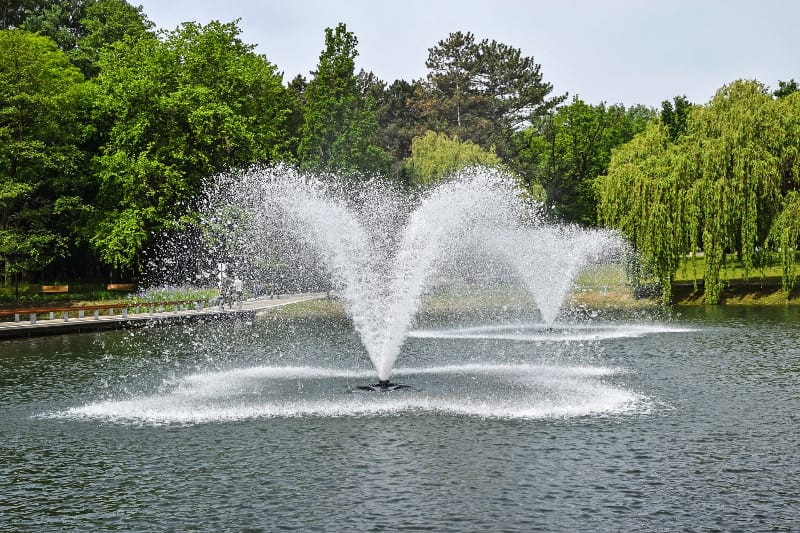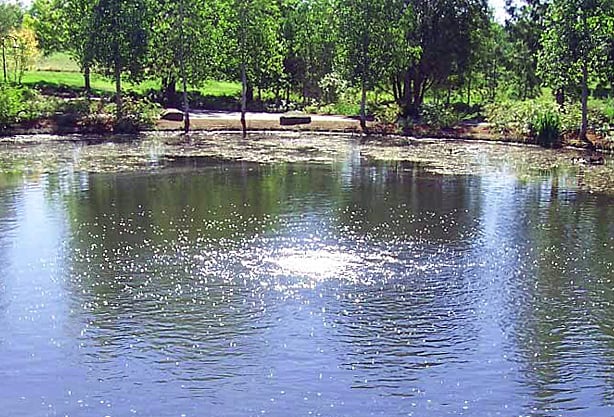Welcome to
On Feet Nation
Members
-
farhan Online
-
-
Blog Posts
Wholesale Liquor Suppliers: A key to a Flourishing Drink Industry
Posted by Micheal Jorden on February 22, 2025 at 3:25pm 0 Comments 0 Likes
Patient Wolf Gin: Craft creating Efficiency with the help of Foreign Philosophy
Posted by Micheal Jorden on February 22, 2025 at 2:41pm 0 Comments 0 Likes
COLOKSGP: Destinasi Terbaik bagi Penggemar Lotere 4D
Posted by QKSEO on February 22, 2025 at 1:56pm 0 Comments 0 Likes
Baik Anda pemain berpengalaman atau pemula, COLOKSGP menyediakan berbagai opsi lotere yang melayani semua tingkat pengalaman,… Continue
Top Content
4 Simple Techniques For Algae Chemicals
Some Known Details About Do Faucet Aerators Save Water
 The Greatest Guide To How To Aerate Water Naturally
The Greatest Guide To How To Aerate Water Naturally
Sunlight is likewise very crucial to facultative lagoons because it adds to the development of green algae on the water surface. Because algae are plants, they require sunshine for photosynthesis. Oxygen is a by-product of photosynthesis, and the existence of green algae contributes considerably to the quantity of oxygen in the aerobic zone.
The oxygen in the aerobic zone makes conditions beneficial for aerobic germs. Both aerobic and anaerobic bacteria are really crucial to the wastewater treatment procedure and to each other. Bacteria deal with wastewater by transforming it into other substances. Aerobic germs transform wastes into carbon dioxide, ammonia, and phosphates, which, in turn, are utilized by the algae as food.
How To Clean A Natural Pond Things To Know Before You Buy
Much of these by-products are then used as food by both the aerobic germs and algae in the layers above. In addition, the sludge layer at the bottom of the lagoon has lots of anaerobic bacteria, sludge worms, and other organisms, which supply treatment through digestion and avoid the sludge from rapidly collecting to the point where it needs to be eliminated.
Sludge in all lagoons collects quicker in cold than in warm temperature levels. Nevertheless, lots of facultative lagoons are created to work well without sludge removal for 5 to 10 years or more. Lagoons must be designed by certified professionals who have actually had experience with them. License requirements and policies worrying aspects of lagoon style vary, but there are some style concerns typical to all lagoons.
Excitement About How To Make Aerated Water
have laws concerning the siting of lagoons, including their range from groundwater listed below, and their range from homes and organizations - Water aerators. Lagoons also should lie downgrade and downwind from the houses they serve, when possible, to avoid the extra cost of pumping the wastewater uphill and to avoid odors from becoming an annoyance.
Any blockages to wind or sunshine, such as trees or surrounding hillsides need to be considered. Trees and weed development around lagoons must be controlled for the very same factors. In addition, water from surface area drain or storm runoff should be stayed out of lagoons, if essential install diversion terraces or drains above the site.
The 10-Second Trick For Do Filters Aerate The Water
The shapes and size of lagoons is developed to maximize the amount of time the wastewater stays in the lagoon. Detention time is generally the most important factor in treatment. In general, facultative lagoons need about one acre for every single 50 homes or every 200 people they serve. Aerated lagoons deal with wastewater more effectively, so they tend to require anywhere from one-third to one-tenth less land than facultative lagoons.
Lagoons can be round, square, or rectangular with rounded corners. Their length needs to not exceed three times their width, and their banks need to have outdoors slopes of about 3 systems horizontal to one unit vertical. This moderate slope makes the banks much easier to mow and preserve. In systems that have dikes separating lagoon cells, dikes likewise must be simple to keep.
The smart Trick of Do Faucet Aerators Save Water That Nobody is Talking About
The bottoms of lagoons ought to be as flat and level as possible (other than around the inlet) to facilitate the continuous flow of the wastewater. Keeping the corners of lagoons rounded also assists to preserve the general hydraulic pattern in the lagoons and prevents dead areas in the flow, called short-circuiting, which can impact treatment.
Partial-mix aerated lagoons are often designed to be deeper than facultative lagoons to allow space for sludge to decide on the bottom and rest undisturbed by the rough conditions produced by the aeration process. Wastewater goes into and leaves the lagoon through inlet and outlet pipes. Modern develops location the inlet as far as possible from the outlet, on opposite ends of the lagoons, to increase detention times and to prevent short-circuiting.
The How To Clean Natural Pond Ideas
Outlets are created depending upon the technique of discharge. They frequently consist of structures that enable the water level to be raised and lowered. Aerators, which are utilized instead of algae as the main source of oxygen in aerated lagoons, work by releasing air into the lagoon or by agitating the water so that air from the surface area is mixed in (straw pond algae control).
 More About How To Clean Natural Pond
More About How To Clean Natural Pond
Various aerator styles produce either fine or coarse bubbles, and work either on the water surface area or submerged. Subsurface aerators are more effective in climates where the lagoon is most likely to be covered by ice for part of the year. Lagoons can attract children, family pets, and unsuspecting grownups, who may think they look like excellent places to play and even swim.
The Ultimate Guide To How To Get Rid Of Duckweed In A Lake
Safety training should be made offered for house owners, operators, and anyone else dealing with these systems. Laws in most locations require lagoons to be surrounded by high fences with locking gates and have warning indications plainly posted. One of the benefits of lagoons is that they require fewer staff hours to operate and maintain than a lot of other systems.
Regular assessments, testing, record keeping, and maintenance are required by local and state agencies, and are all essential to make sure that lagoons continue to supply great treatment. How typically lagoons ought to be examined depends upon the type of lagoon, how well it functions, and regional and state requirements. Some lagoons need more frequent monitoring in the spring and summer season, when grass and weeds grow quickly and when seasonal rental residential or commercial properties are inhabited.
Some Known Factual Statements About How To Aerate Water
Amongst the most crucial indicators are biochemical oxygen need (BOD) and overall suspended solids (TSS). BOD is necessary because it measures how much oxygen organisms in the wastewater would take in when released to receiving waters. TSS measures the amount of strong products in the wastewater. If BOD or TSS levels in the effluent are too high, they can deteriorate the quality of receiving waters (biological augmentation examples).
But because lagoon conditions change http://claytoneynn849.yousher.com/not-known-factual-statements-abou... constantly, the majority of tests must be carried out numerous times, and sometimes at particular intervals or times of the day, to get a precise general view of the lagoon's health. Operators can be trained to take samples and carry out some or all of the tests themselves. It is usually more practical for part-time operators of small systems to send samples out to a lab to be tested - pond dredging cost - aeration in water treatment.
What Does Clearing Ponds Of Weeds Mean?
These weeds use up important space that needs to be inhabited by algae, they can stop sunlight from penetrating the wastewater, and slow blending by the wind. Residue that collects on the water surface must be gotten rid of for the exact same factors as duckweed, however likewise to manage odors and bugs and to avoid inlet and outlet clogging. pond dredging equipment.
Finally, the depth of the sludge layer in lagoons must be examined a minimum of once each year, normally from a boat utilizing a long stick or hollow tube. In a lot of lagoon systems, sludge eventually accumulates to a point it need to be eliminated, although this might take years. Efficiency will suffer if too much sludge is allowed to accumulate.
3 Simple Techniques For Algae Chemicals
Duckweed, watermeal, and hyacinth that grow on the water surface area should be physically eliminated, often from a boat with a tool, like a rake or skimmer. Blue-green algae-Unlike green algae, this alga is stringy and can clump, block sunlight, and trigger short-circuiting. It can dominate lagoons when conditions are poor, when p, H is low, or when protozoa consume all of the green algae.
"Lagoons were an enhancement then, and they still work well today." Located on Flathead Lake in northwest Montana, the city was included in 1910 and has experienced sluggish, consistent development throughout the years. Recently, the growth rate has increased to about 5 percent each year, bringing the existing population to about 4,300.
5 Easy Facts About How Does Aeration Clean Water Described
 The 9-Second Trick For How Does Aeration Clean Water
The 9-Second Trick For How Does Aeration Clean Water
Circulations were simply diverted from one lagoon to the other every six months. To accommodate growth, the city developed a brand-new system in 1981 with three aerated lagoons and one polishing lagoon. Polson also began to operate its own laboratory to keep an eye on the system (aerator tank for well water). "We chose the aerated system based upon recommendations
© 2025 Created by PH the vintage.
Powered by
![]()
You need to be a member of On Feet Nation to add comments!
Join On Feet Nation